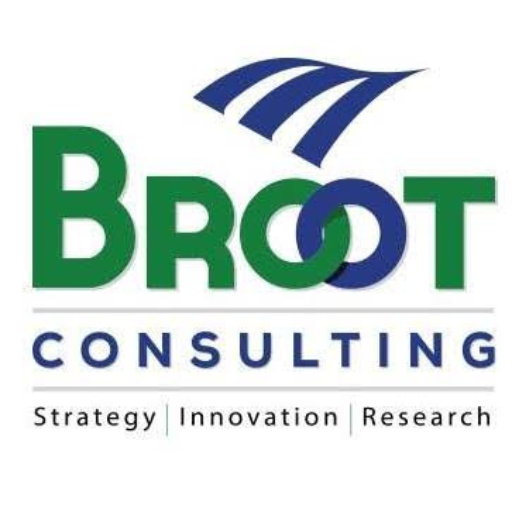In today’s era of continuous disruptions to business and the socio-economic landscape, the ability to adapt and bounce forward is crucial for the success and sustainability of any organization. Why disruptions have been seen to be a death sentence for some organizations, we have also seen organizations and individuals that constantly flourish through disruption. What makes the difference? Our research identifies the following: Transformative mindset, Agile culture, robust and adaptable leadership, and intense focus. Resilient organizations are known to withstand socio-economic turbulence and recover from adversity. What are the traits of these organizations, and how can skills be cultivated and strengthened?
Resilience in the business context refers to the ability to withstand and recover from shocks, disruptive events, challenges, and uncertainties. It involves adapting to change, bouncing back from setbacks, and maintaining stability and growth in adversity. Uncertain times, such as economic downturns, technological disruption, regulatory shifts, or conflict and crises, can severely impact businesses. Building resilience becomes crucial to navigating these challenges and ensuring the survival and success of the company.
This article explores various strategies businesses can employ to navigate uncertain times and build resilience. These strategies encompass both proactive measures and reactive responses to unexpected events. By implementing these strategies, companies can better prepare themselves for potential disruptions or crises and emerge stronger on the other side. The importance and significance of fostering a resilient organizational culture involves creating an environment that promotes adaptability, learning, innovation, and open communication. The significance of robust risk management practices includes conducting thorough risk assessments, developing contingency plans, and regularly reviewing and updating these plans to address emerging risks. Resilience is a fundamental pillar for businesses, enabling them to uphold customer trust, retain key talent, and maintain financial stability. This resilience is especially critical in the face of economic challenges that have impacted numerous African countries.
An illustrative example is the case of the Zambian government’s abrupt decision in mid-2012 to discontinue the use of US dollars as legal tender, followed by a currency rebasing in January 2013. These economic disruptions profoundly impacted a Zambian company specializing in producing unique hand-painted textile products, mainly due to its strong ties to the tourism industry. However, adopting a resilience strategy of ‘Combining passion and vision with realism’ proved instrumental.
Under new management, the organization made tough decisions, including streamlining product lines and trimming overheads, to restore profitability while preserving its social mission. This approach successfully merged realism with passion and mission, leading to the company’s recovery.
In the telecommunications sector, providing exceptional customer service is paramount, and businesses like Safaricom in Kenya have faced challenges in meeting customer expectations, including network outages, billing issues, and service disruptions.
Safaricom responded to these challenges by investing in enhancing its customer service infrastructure. This proactive approach involved establishing call centers, introducing self-service options through mobile apps and online portals, and providing comprehensive training to its staff, ensuring the delivery of top-quality support. By prioritizing improving the customer experience, Safaricom effectively retained its existing customer base and attracted new subscribers, showcasing its resilience in the face of customer-related challenges.
Fintech companies like Flutterwave have demonstrated their resilience by actively addressing regulatory hurdles. In 2019, the Central Bank introduced new regulations mandating that fintech companies obtain licenses to operate within the country.
Flutterwave navigated this regulatory landscape successfully, obtaining the required license and ensuring compliance with regulatory standards, thus continuing its operations without getting bogged down with regulatory disruption. This proactive and resilient approach to regulatory compliance exemplifies Flutterwave’s ability to thrive within complex regulatory environments, overcoming potential obstacles that could have impeded its growth and stability. These examples underscore the vital role of resilience in the ever-evolving business landscape, where adaptability and determination are key to sustained success.
From our various studies interacting with clients across various industries, we observed the following as critical factors contributing to resilience and better performance in an era of constant disruptions:
Transformative Mindset:
Strong and Adaptive Leadership: Resilient businesses are invariably led by visionary and adaptive leaders who can anticipate and respond effectively to changing circumstances. These leaders foster a culture of flexibility and continuous learning, encouraging their teams to embrace change and seek creative solutions. A rigid leadership style or fixed mindset is antithetical to positioning the business for sustained success in today’s ever-evolving business environment.
Robust Risk Management: Effective risk identification and management is a hallmark of resilient businesses. They have a well-established risk management culture, identifying potential risks and developing comprehensive plans to mitigate and respond to them. By proactively addressing vulnerabilities, these businesses are well-prepared to navigate unforeseen challenges, minimizing disruptions to operations and maintaining stability even in today’s unique business landscape.
Employee Well-Being and Engagement: Recognizing that their employees are their most valuable asset, resilient businesses prioritize the well-being and engagement of their workforce. They create a supportive, inclusive work environment that prevents creative burnout and silo-mentality. They create a learning environment that fosters inspiration, experimentation, and radical collaboration. They constantly build a culture that engages employees and makes them deeply committed to the company’s mission and vision. A well-motivated workforce is a significant asset, propelling the business forward to superior performance.
Intense Focus:
The above five qualities laid the foundation for building resilient businesses and navigating the complexities of the local business landscape. They are not merely reactive in the face of adversity; they proactively prepare for and respond to challenges. Their leadership encourages agility and innovation; their risk management strategies ensure preparedness and their engaged employees become a source of immense strength and resilience.
Amidst the dynamic tapestry, resilience is not a survival tool but the linchpin for unlocking innovation, inspiring unwavering trust, nurturing top talent, and fueling the journey toward long-term prosperity. It’s a strategic advantage that elevates businesses, propelling them on sustained growth and unparalleled excellence.
Resilience is not merely a buzzword; it’s a fundamental characteristic that empowers businesses to thrive amidst adversity, instilling customer trust, retaining key talent, and sustaining financial stability. Here’s how resilience contributes to these pivotal outcomes:
Maintaining Customer Trust:
- Consistent Service: Maintain unwavering service delivery, even during disruptions to build trust and loyalty.
- Transparent Communication: Keep customers informed during uncertain times, demonstrating dedication and honesty.
- Effective Problem Resolution: Address challenges swiftly and efficiently to enhance customer satisfaction and trust.
- Quality and Reliability: Focus on maintaining high-quality, reliable products and services to reinforce confidence and satisfaction.
Retaining Key Talent:
- Supportive Work Environment: Resilient businesses cultivate a supportive work environment that values and champions employees, particularly during disruptions. Initiatives like flexible work arrangements, employee assistance programs, and transparent communication are instrumental in retaining top talent.
- Training and Skill Development: Resilient businesses invest continuously in the training and development of their workforce, enhancing their skills and capabilities. This investment bolsters the ’organization’s adaptability and signals a commitment to employees’ long-term growth.
- Recognition and Appreciation: Recognizing and appreciating the efforts of crucial talent during challenging times is It boosts morale and contributes to job satisfaction, making it more likely that these individuals will remain committed to the organization.
- Career Growth Opportunities: Resilient businesses provide pathways for career growth and advancement. This motivates employees to stay, knowing they have opportunities to develop their skills and progress within the organization.
Sustaining Financial Stability:
- Diverse Revenues: Diversify income sources to reduce vulnerability and mitigate risks.
- Cost Efficiency: Maintain cost control and efficiency to adapt to disruptions and ensure financial stability.
- Risk Management: Implement insurance and financial contingencies to minimize the impact of unexpected events.
- Capital Access: A strong track record and risk management practices enable easier access to capital during challenging times, stabilizing finances.
In summary, resilience is a multifaceted approach that helps businesses weather disruptions and challenges. By maintaining customer trust, retaining key talent, and sustaining financial stability, resilient businesses are better positioned to thrive in the long term, even in the face of adversity. This, in turn, contributes to their overall success and growth.
BUILDING A RESILIENT CULTURE
First Rule: Know your operating Environment. Understanding the business environment is crucial for strategic planning and decision-making in the complex and dynamic business world. This involves a multifaceted process that includes assessing challenges, identifying risks, and being attuned to potential disruptions and uncertainties. Here are some steps:
- Conduct honest self-assessment : In pursuing business resilience, an organization’s ability to face reality and conduct a candid self-assessment is a cornerstone of its strength. Resilient organization recognize the Intrinsic value of this practice, wherein they critically evaluate their current position, align it with their envisioned destination, and anticipate the challenges ahead. A simple tool for conducting honest self-evaluation is a SWOT analysis. It provides a comprehensive overview and helps identify the internal and external factors that may impact the success or failure of a business; beyond the SWOT analysis, organizations can employ other methods and tools for objective and honest analysis of their position. While SWOT ’ analysis is a valuable framework. It’s essential to have a diverse set of evaluation tools to gain a more comprehensive understanding of an organization’s strengths, weaknesses, opportunities, and threats.
- Analyze market trends: Stay updated on industry trends, market conditions, and customer preferences. Identify potential risks from market changes.
- Monitor competition: Assess the competitive landscape to anticipate challenges and disruptions from competitors.
- Evaluate regulatory and legal factors: Understand the regulatory environment and identify risks from regulation changes.
- Assess economic factors: Analyze economic indicators such as inflation and exchange rates to identify uncertainties.
- Understand technological trends: Stay current with industry technology trends and assess risks associated with technology adoption.
- Identify potential disruptions: Look for events like natural disasters or supply chain issues and create contingency plans.
- Evaluate financial risks: Assess financial risks like cash flow problems or debt burdens and develop strategies to manage them.
- Engage stakeholders: Involve employees, customers, suppliers, and investors in risk assessment for valuable insights.
- Develop a risk management plan: Create a comprehensive plan with mitigation strategies, contingencies, and regular monitoring.
Remember, the business environment is dynamic, and risks and challenges may evolve. Regularly reassess and update your risk assessment to stay ahead of potential disruptions and uncertainties.
Developing a Resilience Mindset and Leadership
Resilient leaders possess skills that set them apart from their peers: adaptable mindset, emotional intelligence, radical collaboration and strong problem-solving skills. They use a growth and solutions-oriented mindset to lead and inspire their employees to anticipate the storm and glide with it. They cultivate a collaborative team environment, empowering members to embrace challenges and adapt confidently.
Resilient leadership is the beacon guiding long-term success, helping navigate uncertainty and shape a promising future. In the competitive business world, resilience is fundamental. Companies must leverage technology, foster innovation, and establish feedback loops to bolster resilience, fortify against crises, and ensure continuous growth and adaptability. Agile Leadership for Resilient Culture In the context of building business resilience, agile leadership plays a pivotal role. Agile leaders are instrumental in steering organizations through turbulent times by embodying frequent check-ins with their teams, anticipating obstacles, and addressing concerns identified by team members. They empower their teams, take calculated risks, and prioritize continuous learning and improvement. Here are key competencies and strategies for developing resilient leadership in the business context:
Key Competencies for Resilient
Leadership:
1. Diversity & Inclusion: Inclusive teams, reflecting various backgrounds and perspectives are vital for resilience.
2. Collaboration: Cross-functional collaboration, open communication, and agile methods enhance adaptability.
3. Empowerment: Empowering team members with autonomy, resources, and training to drive the organization forward.
4. Continuous Learning: Teams that seek feedback, learn from experiences, and develop skills contribute to resilience. Foster a culture of continuous improvement and provide professional development.
Strategies for Developing Resilient
Teams:
1. Team-Building Activities: Resilient organizations invest in team-building activities that enhance collaboration, trust, and camaraderie among team members. These activities help foster a resilient team spirit.
2. Leadership Development Programs: Leadership development programs should also focus on building and maintaining resilient teams. Equipping leaders with the skills to create and nurture such teams is essential.
3. Performance Management: Implement systems that encourage and reward collaborative efforts, empowerment, and continuous learning. Performance evaluations can be used to measure and reinforce behaviors that contribute to team resilience.
Resilient Systems and Processes for Business Resilience
Resilient systems and processes are the backbones of a resilient organization. They enable organizations to effectively respond to change, manage risk, and achieve their objectives. In the context of business resilience, the following strategies and competencies are crucial:
Key Strategies for Resilient Systems and
Processes:
1. Agility: Flexible systems, agile methods, and tech adoption for adaptability.
2. Risk Management: Identifying, assessing, and mitigating risks through regular assessments and mitigation strategies.
3. Continuous Improvement: Cultivating a culture of ongoing improvement, empowering employees to drive efficiency and innovation.
4. Data-Driven Decision-Making: Using data and analytics for informed decisions, performance measurement, and improvement with strong data governance and a data-driven culture.
Strategies for Developing Resilient
Systems and Processes:
1. Tech Investment: Resilient organizations invest in flexible, data-driven technology to adapt and innovate.
2. Data Analytics: Implementing data analytics tools for insights and process Building business resilience involves developing resilient leadership, teams, systems, and processes. These elements must work in harmony, focusing on adaptability, agility, diversity, empowerment, and continuous improvement to navigate the challenges of the business landscape effectively. Resilience is not just a capability; it’s a competitive advantage in an ever-changing world.
Business resilience is far from a passive quality; it’s an active strategy rooted in embracing technological advancements and cultivating a culture of innovation. Cloud computing is a transformative force, providing agility and reducing reliance on traditional infrastructure investments. The Internet of Things (IoT) offers real-time data for informed decision-making and predictive maintenance, mitigating disruptions. Artificial intelligence and machine learning automates processes and enhance decision-making.
Fostering an innovative culture is essential. Encouraging employees to explore creative avenues and embrace change, nurture an environment ripe for groundbreaking solutions. Collaborative partnerships with external entities, including start-ups and research institutions, bring fresh perspectives and novel ideas.
With the combination of technology, innovation, and continuous learning, businesses gain the capacity to weather crises and thrive in adversity. Resilience transcends safeguarding and emerges as a proactive catalyst for sustained success and growth, positioning companies to adapt within the evolving business landscape.
Conclusion
Developing business resilience is not an endeavor confined to a single action but a continuous and proactive process. Enterprises must routinely assess and update their strategies, stay attuned to market trends and potential risks, and remain open to change and innovation.
Building resilience necessitates unwavering dedication and a forward-thinking mindset. By wholeheartedly embracing resilience ethos, businesses can adeptly navigate turbulent periods and emerge as stronger and better-prepared entities, thus securing long-term prosperity. Let us commit to the deliberate actions required to effectively construct and sustain business resilience. Building resilience is essential for businesses to navigate uncertain times successfully. By diversifying revenue streams, fostering a culture of innovation, building strong relationships with suppliers and partners, investing in technology and digital transformation, developing a contingency plan, and prioritizing employee well-being and engagement, businesses can enhance their ability to adapt and thrive in the face of challenges.













